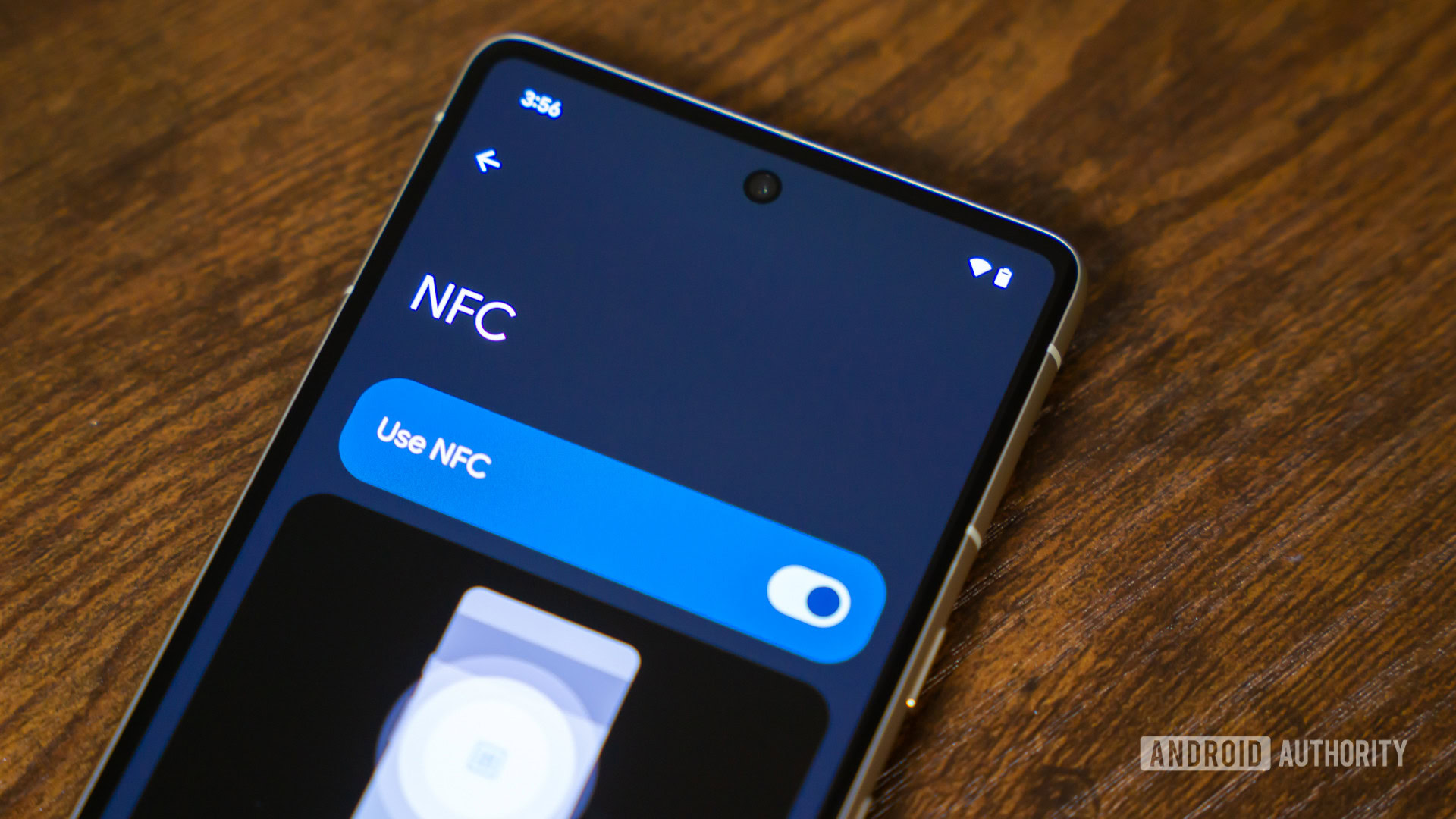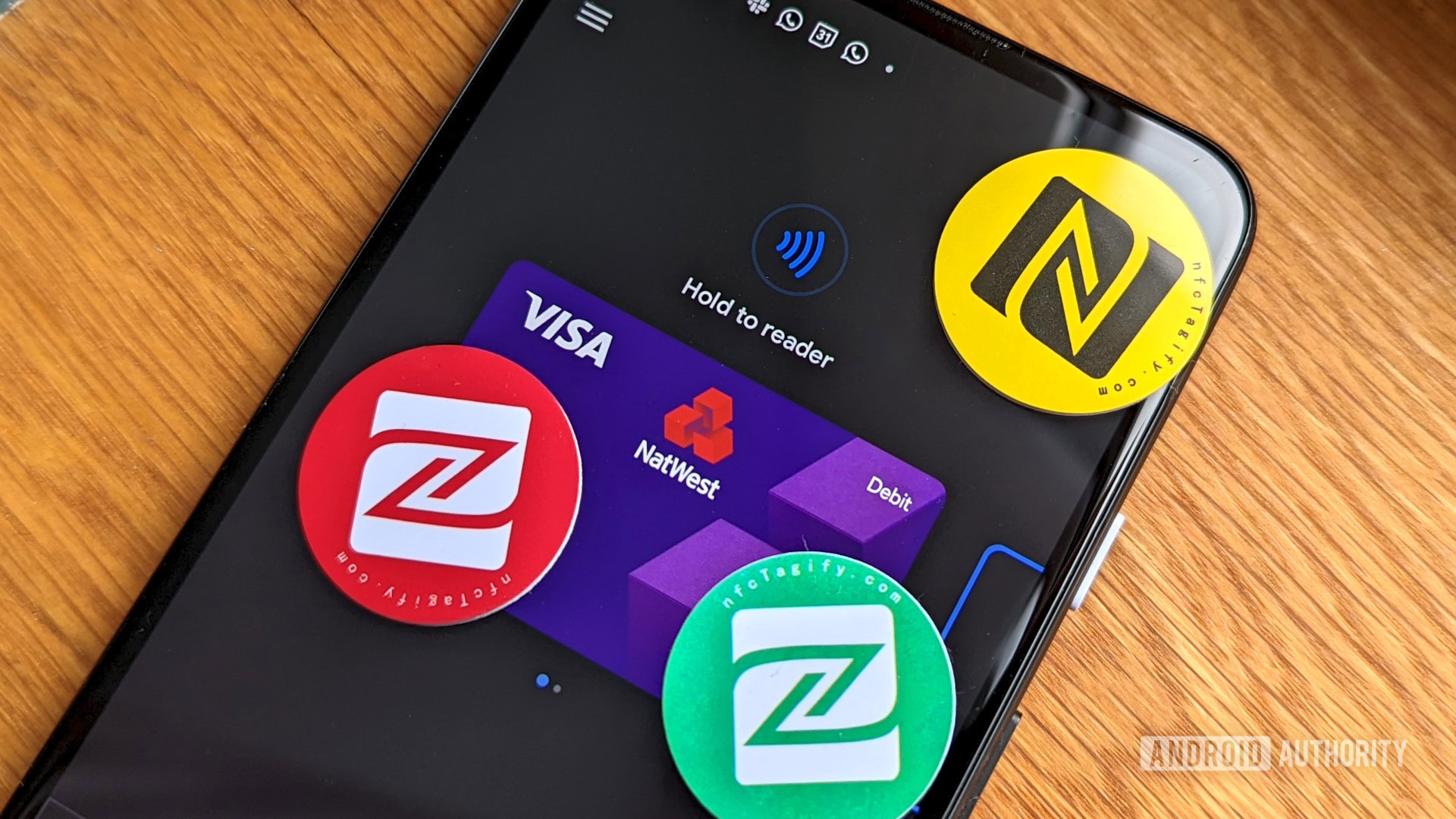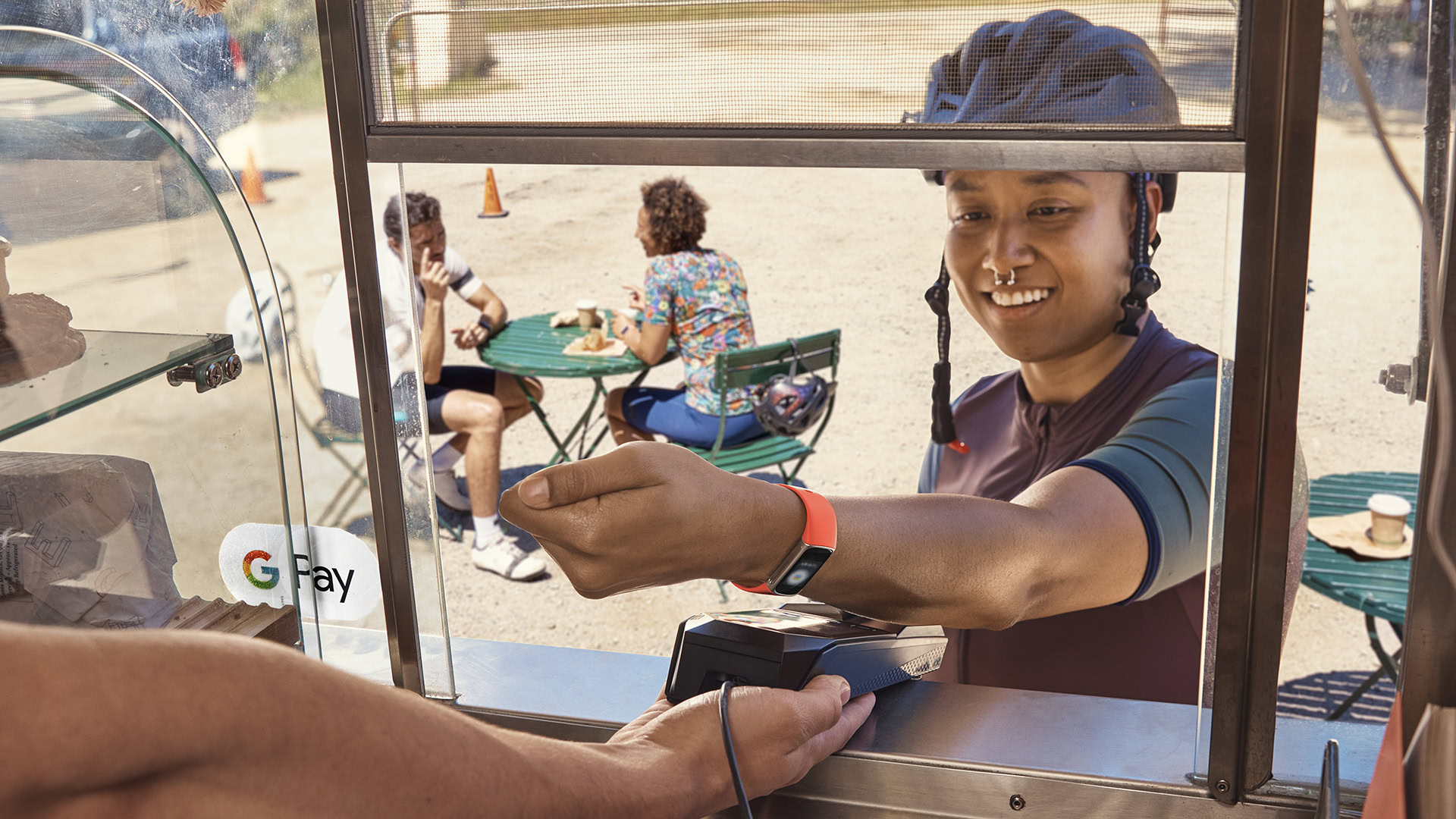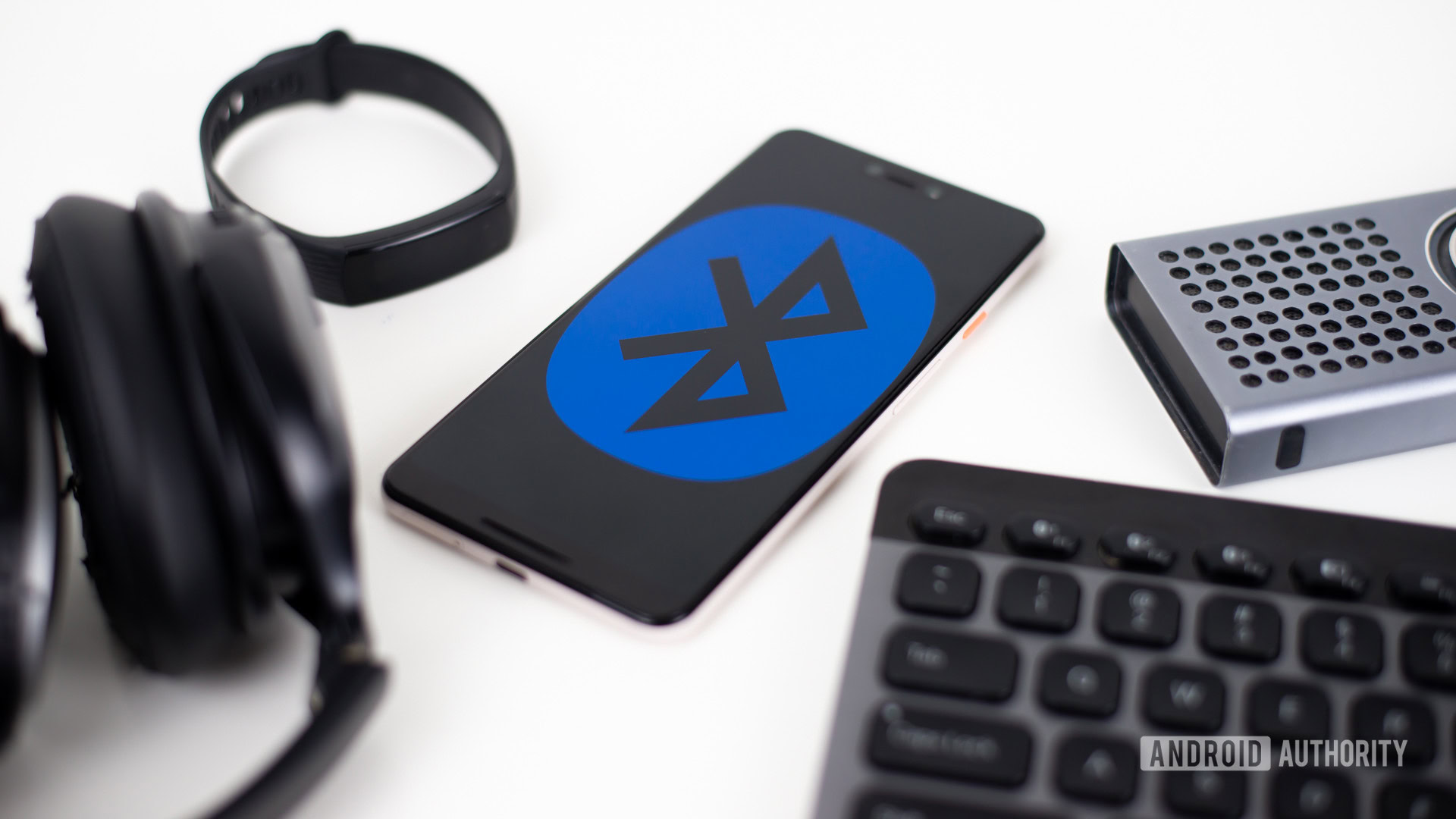Affiliate links on Android Authority may earn us a commission. Learn more.
What is NFC and how does it work? Everything you need to know
Published onNovember 11, 2024
Most smartphones have Near Field Communication, or NFC technology, built in these days. If you’ve ever used a mobile payments app like Samsung Pay or Google Pay, you already know how NFC works. In a nutshell, it is a proximity-based wireless communication standard. Unlike Wi-Fi or Bluetooth, however, NFC interaction is limited to an extremely short range. Besides smartphones, you can sometimes find NFC on tablets, speakers, collectibles, and even gaming consoles like the Nintendo Switch and 3DS.
Even though NFC may seem a bit lackluster on paper because of its short wireless range, it’s still a convenient feature that many of us take for granted every day. So in this article, let’s take a quick look at what NFC is and how it works. Later, we’ll also discuss where you’re most likely to encounter the technology in the real world.
QUICK ANSWER
NFC, or near-field communication, is a short-range wireless technology that allows your phone to act as a transit pass or credit card, quickly transfer data, or instantly pair with Bluetooth devices like headphones and speakers.
Jump to key sections
What is NFC and how does it work?

We gave you a brief answer to what it is already, but how does NFC work? NFC isn’t some radically new technology. It’s simply an evolution of RFID (radio frequency identification) technology that has already been around for decades. If you’ve ever used a key card to access an office building or hotel room, you’re already familiar with how it works.
Both RFID and NFC operate on the principle of inductive coupling, at least for short-range implementations. This essentially involves a reader device passing an electric current through a coil, which in turn generates a magnetic field. When you bring a tag (with its own coil) near the reader, the magnetic field then induces an electric current within the tag — sans any wires or even physical contact. Once the initial handshake is complete, stored data on the tag is wirelessly transmitted to the reader.
NFC is based on RFID technology but has a much lower transmission range.
The key distinction between RFID and NFC lies in their transmission ranges — the former is often used over longer distances. For example, some regions automatically collect road tolls through RFID. Tags are usually affixed to vehicle windshields, allowing you to drive past toll booths at low speeds. Communication can take place over even longer distances (think a hundred feet or more) if the RFID tag is equipped with a power source.
NFC, however, only has a maximum range of a few centimeters, at most. And in most smartphone-related applications, you’ll find that the software will only initiate communication if there’s physical contact. This is to prevent accidental triggers — especially important now that the technology is used for transferring sensitive data.
Another noteworthy point is that devices can act as either an NFC reader or tag. This bidirectional capability allows you to use one piece of hardware — such as your smartphone — for all kinds of different applications.
Do all phones have NFC?

In Western markets, NFC has been a staple feature on smartphones for several years at this point. The Google Nexus S was the first Android device to include it all the way back in 2010. Apple also eventually embraced the technology in 2014 — NFC is present on every iPhone since the 6. Similarly, wearable devices, ranging from fitness trackers like the Mi Band to smartwatches like the Apple Watch, also include it.
Most smartphones and wearables are equipped with NFC these days.
These days, only lower-end devices tend to not come with NFC. That said, the importance of NFC may vary depending on the region. To that end, some manufacturers, like Xiaomi, omit the coil in certain markets like India due to the technology’s low adoption.
What can you do with NFC on a phone and beyond?

NFC adoption has improved significantly in recent years. Here are a few popular use-cases of the technology:
- Data transfer: With the release of Android Ice Cream Sandwich in 2011, Google introduced Android Beam. The feature allowed you to transfer whatever content or data you had on-screen to other NFC-enabled devices. All you had to do was touch the back of both devices and accept the transfer prompt. Android Beam was only recently shelved in favor of Nearby Share, which uses Bluetooth and Wi-Fi Direct technologies instead.
- Mobile payments: Samsung Pay, Google Pay, and Apple Pay all use your smartphone’s NFC chip for contactless payments. Most debit and credit cards these days already have an NFC tag built-in. The aforementioned apps simply emulate these tags, with permission from the issuing bank or financial institution. Once configured, all you have to do is bring your smartphone or wearable device close to the card reader.
Apps like Google Pay and Samsung Pay use NFC to facilitate contactless payments.
- Quick pairing: NFC’s convenience extends to devices that don’t have a screen. Many wireless speakers and headphones use it to exchange pairing information with your smartphone. Some cameras also use it to quickly initiate a Wi-Fi Direct connection for easy photo and video transfer.
- Public transport access: Public transport in many cities, including Hong Kong, Singapore, and London, use NFC-based cards as a form of access control mechanism for public transit. Some systems are even compatible with payment apps like Google Pay so you don’t have to carry the card around.
- Gaming: Nintendo uses the technology to connect physical toys with video games. An Amiibo is like any other action figure or trading card, except that it also contains an embedded NFC chip. If you bring one of them near a Nintendo Switch or 3DS, it automatically grants you additional characters, levels, or bonus items for a particular game.
- Home automation: A few smart home platforms, including Home Assistant and Apple’s HomeKit, support NFC as well. Using apps on both Android and iOS, you can configure off-the-shelf NFC tags to control devices or automation.
NFC vs Bluetooth and UWB: How do they stack up?

NFC is far from the only wireless communication protocol. In fact, most devices already include similar technologies such as Bluetooth and ultra-wide band (UWB). So why include another?
One of NFC’s biggest strengths is that it does not require pairing or manual input to establish a connection — tapping takes less than a second. Bluetooth devices, by contrast, have to be paired with each other, which is kind of a cumbersome process.
NFC is also significantly more energy-efficient than Bluetooth and UWB since the transmission range is extremely short. Most smartphones ship with the NFC radio enabled by default, while turning off Bluetooth is often the first battery-conserving suggestion.
NFC is less power hungry and faster to use compared to Bluetooth.
In fact, NFC’s lower power draw also allows certain devices like the iPhone to enable it in emergency scenarios. This means that even if your phone runs out of juice, it will send just enough power to the NFC chip for you to access your campus, hotel room, or car.
While cars are starting to adopt UWB tech for keyless entry, it’s nowhere near as efficient as NFC. To that end, it’s not surprising that many automakers implement the latter as a fallback access mechanism. UWB is also more expensive and most applications currently served by NFC don’t need its positional precision. The tech is also far more useful for precision finding features like Android’s Find My Device Network.
Furthermore, with so many NFC use cases already fleshed out, it’s clear that the technology has carved a niche for itself. To that end, adoption is likely only going to improve from here on out.
FAQs
An NFC tag is a small integrated circuit consisting of a copper coil and some amount of storage. Data can be read or written to this tag only when another NFC device is brought near it because it doesn’t have a power source. The proximity of the NFC device induces power in the tag and enables data transmission.
Any powered device that has its own NFC coil (like a smartphone or tablet) can act as an NFC reader. The reader device uses its battery to generate an electromagnetic field, which powers any tag brought near it. Another common example of a reader is a payment terminal, which uses NFC to authenticate a debit or credit card.
Every iPhone model released since the iPhone 5S in 2014 (6 and up) includes NFC hardware. As for Android, most mid-range and premium devices offer NFC support. You can consult the manufacturer’s website or independent reviews to determine the feature’s availability.
If you own a recent iPhone (from 2015 or later), it definitely has the requisite hardware for NFC. On Android, you can delve into the Settings app and then look for NFC under the “Connected Devices” or “Network and Sharing” sub-menus. Most recent Android phones support NFC.
NFC stands for Near Field Communication. It is a technology that allows wireless data transmission over short distances using radio waves.
You cannot explicitly turn off NFC on an iPhone. The feature is always on by default. The good news is that it consumes very little battery, so there’s not a lot of benefit to turning off NFC like you would with Wi-Fi or Bluetooth.
Your smartphone can use NFC to mimic a contactless debit or credit card using apps like Google Pay, Samsung Pay, and Apple Pay. Payment terminals use NFC so your smartphone essentially emulates the data stored on your card. Only the account holder can add their card because the process involves authentication with the bank.